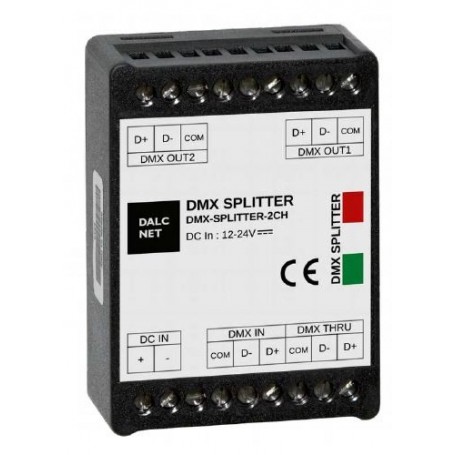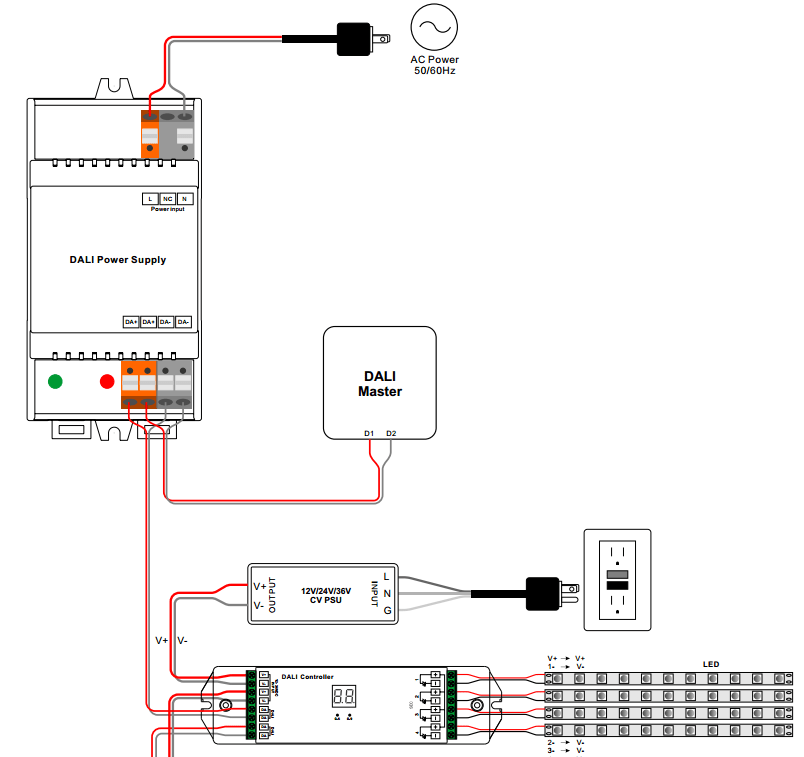Application note
RDM (R emote D evice M anagement) is a protocol that sits on top of the normal DMX512 data standard. With the addition of RDM, the DMX512 system becomes a bi-directional (half-duplex) system. The controller is able to send out a question to devices on the wire, which can then respond with an answer. RDM Scanner Control Manager 4.0.1.2 - Epson Driver is an application offered by the software company RDM Corporation. Frequently, computer users choose to remove this application. This is efortful because doing this by hand requires some knowledge related to PCs.
| DMX/RDM is a robust and reliable system for lighting control. However, if not implemented correctly, problems can arise such as random flashing of lights, erratic operation and delays in responding to commands. This document explains the best practices in DMX wiring. | Scroll down PDF file |
Below, a typical DMX universe is shown. The DMX controller sends signals over the DMX cable to the drivers. At the last driver, the cable has to be terminated with a 120Ω resistor to prevent reflections of the signal. |
Raw device mapping (RDM) provides VMs with the direct access to the LUN. An RDM itself is a mapping file in a separate VMFS volume that acts as a proxy for raw physical storage. Sekonic usb devices driver download. It keeps metadata for managing and redirecting disk access to the physical device. RDM merges some advantages of VMFS with direct access to the physical device. The RDM EC9600i network check scanners provide plug-and-play capability with no drivers or software to install. It can be easily connected to PCs, MACs, mobile devices and/or payment terminals for check scanning within any operating system, browser, or network environment, including Citrix.
Figure 1 – Typical DMX universe
Important things to consider are:
- DMX is a three-wire system. Use all three!
- DMX is based on the EIA-485/RS-485 standard.
- Always use cable specifically designed for DMX / RS-485. These cables have an impedance of 120Ω and a low capacitance. For instance: Belden 9841 or 3105a.
Figure 2 – Belden 9841 cable
- DMX must be terminated with a 120Ω resistor to prevent reflections.
- After 32 unit loads a repeater/booster should be used.
- Keep cabling below 300 metres between the controller and the last driver.
- It is generally considered good practice to provide separate DMX in and DMX out/DMX thru connections to your fixture to aid in installation. This can be in the form of pigtails, RJ-45 connectors or 5-pin XLR-connectors
Rdm Driver Install
Connecting the cable on eldoLED drivers with 'DMX in' terminals only
Drivers with only one set of DMX terminals (DMX in +, DMX in -, and DMX in shield) use a standard DMX bus topology (daisy chain). At the last driver, a 120Ω resistor must be connected between the DMX in + and DMX in - pins of the driver as termination. This method is compatible with RDM.

Figure 3 – Daisy chain topology with 'DMX in'only
Connecting the cable on eldoLED drivers with 'DMX in' and 'DMX thru' terminals
Some eldoLED drivers have an extra set of DMX terminals (DMX thru +, DMX thru - and DMX thru shield) in addition to the 'DMX in' terminals to make installation easier. Internally, these 'thru' terminals are electrically connected to the 'DMX in' terminals. These drivers also use standard DMX bus topology (daisy chain). The 'DMX thru' connections are compatible with RDM.
Figure 4 – Daisy chain topology with 'DMX in' and 'DMX thru'

Connecting the cable on eldoLED drivers with 'DMX in' and 'DMX out' terminals


Drivers with 'DMX out' terminals (DMX out +, DMX out - and DMX out shield) in addition to the 'DMX in' terminals provide a buffered DMX out signal. These drivers offer additional functionality on top of standard DMX. On some products 'DMX out' is called LEDsync.
- DMX out acts as a built-in booster or repeater, so no additional repeaters or boosters are necessary after 32 drivers.
- DMX out provides automatic driver addressing possibilities.
- With DMX out, it is possible to have mixed topologies instead of daisy chain only.
- Only the first driver on the 'DMX out'-chain (master) is visible on RDM – slaves behind are not visible. If RDM is required, use the 'DMX in' terminals instead of 'DMX out'.
- Each DMX out adds a delay of approximately 300µs. After 75 drivers, this delay will be visible.
- The maximum available DMX address is 480; DMX addresses 481 – 512 are reserved for 'DMX out'-features.
- If one driver in the chain fails, devices behind the failing driver will stop receiving DMX signals.
- Drivers without 'DMX out'-terminals or third party drivers should be first in the DMX chain, they cannot be connected behind drivers with 'DMX out'.
Termination with DMX out
With drivers that have DMX out terminals extra care should be taken with termination, depending of the configuration. In short: termination is necessary after each cable run, but not at any T/Y-connections. Some examples:
Figure 5 – Termination on each cable run
Figure 6 – Mixed topology with daisy chain and DMX out
Figure 7 – It is not possible to have 3rd party drivers in the DMX out chain
Why choosing the right cable is important
External disturbances
DMX is a balanced three wire system. Two wires carry the data signals and one wire acts as common reference. The advantage of a balanced system is that external disturbance signals (EMI or electromagnetic interference) can easily be reduced. Both signal lines in a balanced system carry the same signals with opposite polarity which are subtracted from each other at the receiver (driver).
DMX cables should have twisted pair conductors. This means that each pair of wires in the cable are twisted together. This ensures that any external disturbance signal will occur equally on both signal wires (DMX in + and DMX in -). Since the receiver subtracts signals on both wires, the equal disturbance signals will also be subtracted from each other and are cancelled out.
Figure 8 – EMI reduced with balanced system
The use of a shielded cable can further reduce EMI effects. The shield prevents external disturbances from reaching the signal wires. If a shielded cable is used, do not connect the DMX shield to mains ground.
Reflections
DMX works with high frequency signals. In an unterminated cable, these signals will be reflected when they reach the end of the cable. These reflections can cause erratic behaviour like random flashing of lights, wrong brightness levels, etc
Figure 9 – Ideal signal Figure 10 - Signal with reflections
Signal loss
Long wires always cause some signal loss due to the resistance of the cable. Therefore, the maximum cable length between the controller and the last driver must be less than 300 metres.
There is also signal loss because of the loading of the connected drivers. The DMX512 standard states that a maximum of 32 unit loads can be connected to one DMX cable. eldoLED drivers are one unit load. If the total unit load exceeds 32, a splitter, repeater or booster can be used. Note, however, that repeaters, boosters and splitters may also add to the total unit load.
Figure 11 – More than 32 unit loads
Summary of best practices
- Use twisted pair cables with an impedance of 120Ω and a low capacitance. UTP Cat5 or Cat6 network cable can also be used but have a slightly lower impedance of 100Ω.
- Terminate at the last driver with an impedance of 120Ω.
- If shielded cable is used, only connect shield to ground on one side (typically, the controller should have its shield terminal connected to ground).
- DMX is designed to use three wires.
- Not following the above recommendations may seem to work at first, but can cause problems. Sometimes after weeks of seemingly normal operation
Download white paper
Download the PDF file [size: 545 kB].
Rdm Scanner Driver
Interested?
If you are not sure how to go about wiring your DMX-RDM lighting system, contact your sales representative.
←Rdm Driverless Pod
Go back to overview